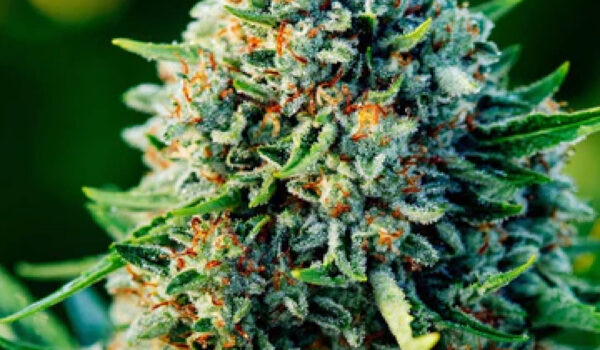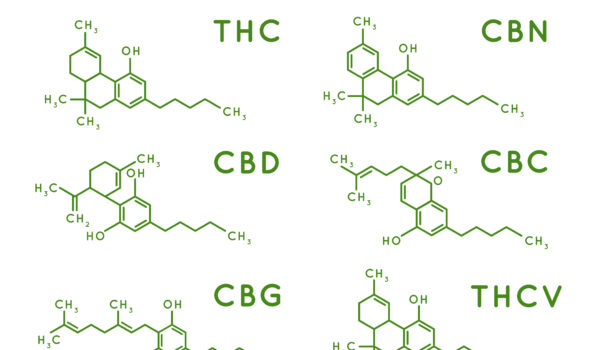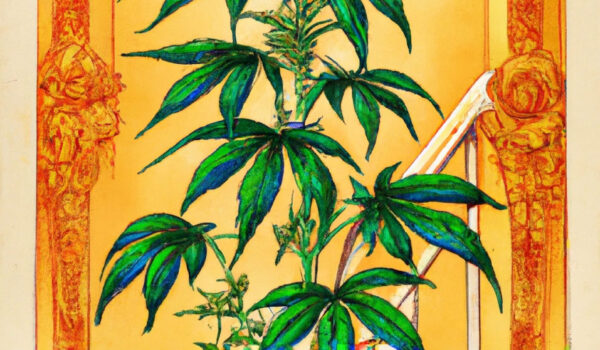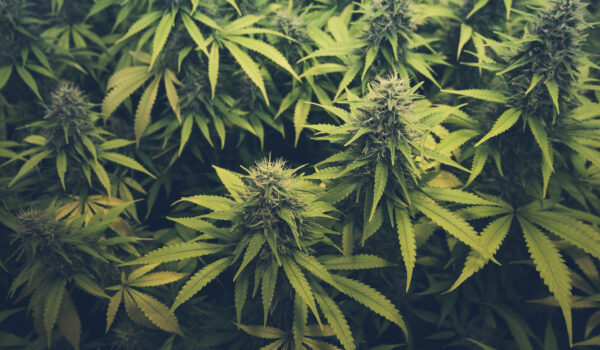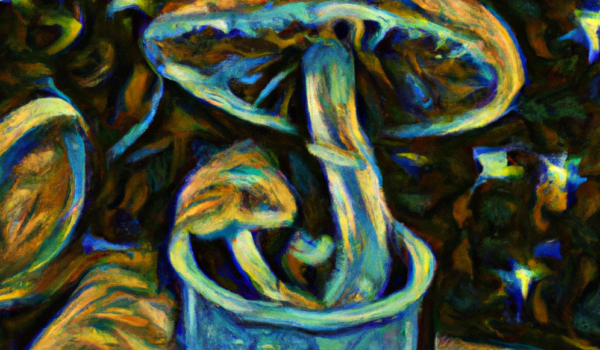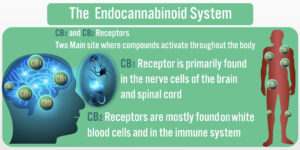
Definitions:
-
- Endogenous (Endo) – having an internal cause or origin. growing or originating from within an organism.
- Cannabinoid – A class of chemical compounds that acts on cannabinoid receptors found throughout the body.
- Endocannabinoid – Anandamide and 2-AG (2-arachidonoylglycerol) are the two best known endocannabinoids that are made naturally by the human body.
- Phyto – of a plant; relating to plants, made by a plant.
- Phytocannabinoid – THC (Tetrahydrocannabinol) and CBD (Cannabidiol) are the best known phytocannabinoids that are made by the cannabis plant.
The Endocannabinoid System is a fairly new discovery with new things being learned about it daily. These are just some of my notes.
In 1964, researchers studying the effects of cannabis led directly to the discovery of an unknown biochemical communication system. It was named the Endocannabinoid System for the plant that led to its discovery. This system has been found to play a crucial role in regulating our physiology, mood, and everyday experience.
All vertebrates and invertebrates are known to have this ancient internal signaling system that evolved over 600 million years ago, long before cannabis appeared on planet Earth. Endocannabinoids and their receptors are found in fish, reptiles, earthworms, leeches, amphibians, birds, and mammals, except for insects. Scientists believe that its long evolutionary history proves that the ECS must play an important part in animal physiology.
The human Endocannabinoid System makes two well known cannabinoids naturally (endocannabinoid) called Anandamide and 2-AG (2-arachidonoylglycerol). The two main known receptors that these endocannabinoids affect are the CB1 and the CB2.
Anandamide
- In 1988 the CB1 receptor was found in rats brains by Allyn Howlett and William Devane.
- CB1 receptors are mostly found in the brain, central nervous system, connective tissues, gonads, glands, and related organs.
- The main endocannabinoid that stimulates or binds to the CB1 site is Anandamide and its phytocannabinoid (cannabinoid made by plants) is THC. This is one reason why some cannabis strains that are high in THC have such a positive effect on pain and nausea while giving a strong euphoric or high feeling.
- THC is the cannabinoid that gives you the euphoric, intoxicated, high feeling.
- The CB-1 receptor controls psychoactivity.
2-AG (2-arachidonoylglycerol)
- In 1993 the CB2 receptor was found as a part of the immune and nervous systems.
- CBD is the phytocannabinoid (cannabinoid made by plants) that closely resembles or mimics the endocannabinoid 2 AG (2-arachidonoylglycerol) that is naturally by the human body.
- The CB2 receptors are mostly concentrated in the gut, tonsils, spleen, liver, heart, kidneys, bones, blood vessels, lymph cells, thymus gland, reproductive organs, immune system, digestive system (gastrointestinal-tract) and many of the body’s major organs.
- The main endocannabinoid that binds to the CB2 site is 2-AG and its phytocannabinoid CBD.
- The CB2 sites have been found to control or modulate intestinal inflammatory response, regulate appetite, immune system functions and pain management.
- CB2 receptors are found in the brain, but not as densely as CB1 sites and they’re found on different types of cells.
- Extensive U.S. government research shows that CBD has potent anti-tumoral, antioxidant, anti-spasmodic, anti-psychotic, anti-convulsive, and neuroprotective properties. CBD directly activates serotonin receptors, causing an anti-anxiety effect, as well.
More will be added later.



